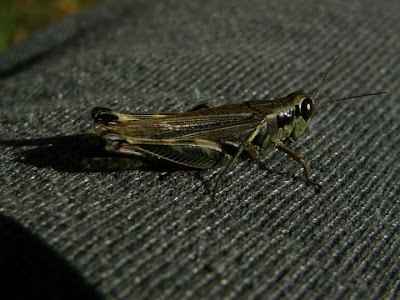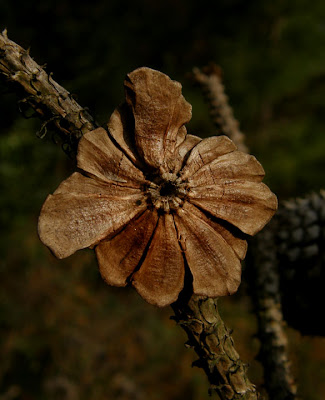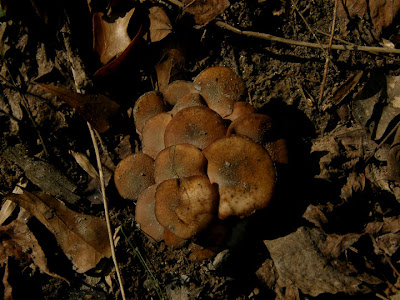 Common dandelions (Taraxacum officinale) were blooming…
Common dandelions (Taraxacum officinale) were blooming…  Henbit (Lamium amplexicaule) buds were about to open...
Henbit (Lamium amplexicaule) buds were about to open... Shepherd’s Purse (Capsella bursa-pastoris) were blooming and developing seedpods. This is the first time I’ve seen Shepherd’s Purse in the wild.
Shepherd’s Purse (Capsella bursa-pastoris) were blooming and developing seedpods. This is the first time I’ve seen Shepherd’s Purse in the wild. At the edge of the woods a little distance from the parking lot, several plants of Elephant’s Foot - probably Elephantopus tomentosa - had bloomed, developed seeds, and dried. These plants were about 30-inches high; twice the height of any that grow at our place.
At the edge of the woods a little distance from the parking lot, several plants of Elephant’s Foot - probably Elephantopus tomentosa - had bloomed, developed seeds, and dried. These plants were about 30-inches high; twice the height of any that grow at our place.This may be an interesting place to visit in search of wildflowers during the year.
Click on an image to view a larger image
Identification resources:
- Southeastern Flora
- USDA Plants Database
- Shepherd's Purse (Capsella bursa-pastoris)
Related posts:
- Charlie Elliott Wildlife Center: Whitetaill Lake




























